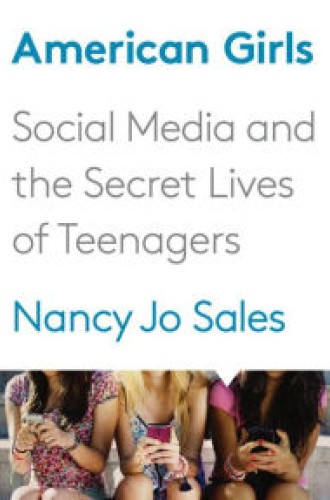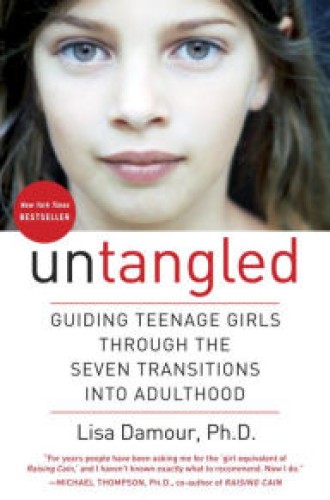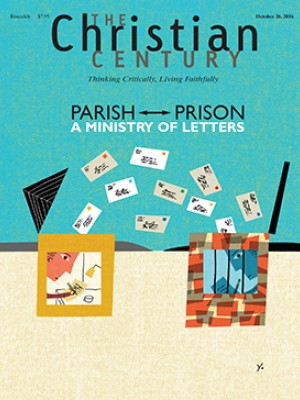A tough age for girls
Teenage girls navigate a tough landscape. There are tools the church can offer them.
In writing about the lives of teenage girls, Peggy Orenstein and Nancy Jo Sales report on violent pornography, rape, bullying, harassment, coercion to “sext” or to perform oral sex, hookup culture, alcohol and drug abuse, and the exploitation of teen desires by social media companies. This is the world, they show us, in which American girls are growing up.
Orenstein is a feminist social critic with a penchant for funny, shocking phrases (“I may be of a different generation, but, frankly, it’s hard for me to consider a penis in my mouth as ‘impersonal’”), a familiarity with pop culture, and a good handle on relevant social science. The core of her book is based on extensive interviews with young women who are in college or college-bound. Her summary:
Read our latest issue or browse back issues.
Young women grow up in a porn-saturated, image-centered, commercialized culture in which “empowerment” is just a feeling, consumption trumps connection, “hot” is an imperative, fame is the ultimate achievement, and the quickest way for a woman to get ahead is to serve up her body before someone else does.
Orenstein is concerned about the imposition of hypersexual body norms on girls, the problematic ideology of “hotness,” and the confusion of female empowerment with sexual availability. Lamenting the proliferation of violent misogynist online porn, she points to its destructive effects on teenage expectations of sex and intimacy. She worries that oral sex, because of its “nonsex” status among many young people, often evades the normal rules of consent.
She is critical of an alcohol-infused hookup culture, especially on college campuses, that demands young women offer their bodies as sexual objects as a ticket to social life, making them vulnerable to assault. Fueling hookup culture, social media persuades girls to post images reflecting an unjust sexualized ideal, making their bodies into products for male consumption. Orenstein rightly observes, “The body as product is not the same as the body as subject.”
A recurrent theme in Orenstein’s research is the inappropriate vocabulary that accompanies hookup, porn, and rape cultures. Young women frequently use awkward “as a catchall word (along with uncomfortable and, sometimes, weird)” to convey “any unpleasant emotion.” They seem uncomfortable assigning morally charged words to situations that should arouse moral indignation. When boys harass them by text or on social media, these exchanges are deemed “awkward.” When they do not wish to perform oral sex but the boy is pushing for it, it is “awkward.” When they are unsure how to extricate themselves from a dangerous situation, it is “awkward.”
Boys, in turn, use funny or hilarious to convey their reaction to women’s sexual degradation. In one harrowing story, bystanders at a frat party can be heard to say on video that the rape of a passed-out drunk girl is “hilarious.” Orenstein suggests that hilarious offers emotional distance for boys who are upset by what they are witnessing but don’t know how to respond without risking their masculinity.
Wanting young women to find healthy ways to be sexual, Orenstein calls for conversation in which adults “tell the truth” about sex, help youth know the difference between porn and real life, and encourage girls to make decisions that lead to joy for themselves and others. She approves programs that help young people discern their own desires, reflect on prior decisions, choose strategies for future action, and practice the words they need in order to gain and give consent.
Sales explores much of the same territory Orenstein does, taking social media as her starting point. Sales is particularly concerned about the effects of violent, misogynistic porn. To understand its effects, she conducted interviews with girls aged 13 to 19 around the country, capturing the stories of a younger age group than Orenstein.
Sales discerns links between the fraternity-like, male-dominated culture of Silicon Valley, the easy availability and violence of online pornography, the rise of the damaging “hot or not” dualism, and the almost total absence of any effort by Silicon Valley to ensure girls’ safety. For example, she notes the problem of nude photos of girls being shared online without their consent. The geniuses who set the rules for social media have ignored this problem, even as they launch apps designed to solve all sorts of problems we never knew we had. Unfortunately, Sales does not pursue this argument throughout the book.
Sales’s book is structured by the age of her interviewees, with a chapter devoted to each age. This structure has the effect of centering girls’ voices, providing sequential snapshots of girls’ development, and revealing the personal effects of violence against young women. But Sales’s larger argument is often lost amid the intimate stories. The immersion into teen life traps readers in a nauseating fun house of female adolescence, where the distorting mirrors of Facebook, Instagram, Twitter, Snapchat, and porn sites endlessly refract the self-projections of disoriented young women.
Insistent that girls are not merely victims, Sales emphasizes girls’ agency and initiative. She profiles girls who have become influential and wealthy by hosting their own YouTube channels. She notes that these girls’ selves seem stunted, replaced by an externalized “personality” that they have constructed for others to consume. Many of the girls Sales profiles also appear to be addicts—to clothes, beauty products, social media “likes,” or interpersonal drama. Girls complain that “social media is destroying our lives,” and yet they also say that without social media they “would have no life.” These girls may not be victims, but they are indentured to social media.
Sales’s conclusions are too brief. Her recommendations—to start a national conversation about porn and its effects on youth; to educate youth about the history of the women’s movement; to introduce girls to feminism; to change the culture of social media; and to encourage girls to read more—are all salutary. But in the face of what she has shown us, it feels like being handed nail clippers to wield against a knot of ten thousand threads.
Lisa Damour steadfastly refuses to wring her hands, rejecting both “girls are victims” and “girls are mean” themes. Instead, assuming that girls have self-knowledge and agency—but still need adult guidance—Damour provides a map for understanding girls’ psychosocial development. Steering clear of alarming statistics, she writes in the calm voice of a therapist: “I’m here to tell you that life with your teenage daughter doesn’t have to feel like a tangled mess. There is a predictable pattern to teenage development, a blueprint for how girls grow.”
Drawing on the work of Anna Freud and Erik Erikson, Damour argues that teenage girls’ development can be understood in terms of seven “strands,” or categories: 1) parting with childhood, 2) joining a new tribe, 3) harnessing emotions, 4) contending with adult authority, 5) planning for the future, 6) entering the romantic world, and 7) self-care. Each chapter ends with a section on “when to worry”—which effectively reminds parents to turn down the dial on their anxiety the rest of the time. Her schema, while perhaps too simple, can help adults understand why girls act the way they do and offer caring guidance. Indeed, when overlaid on the more intimate, often disturbing portraits in Orenstein’s and Sales’s works, Damour’s seven “strands” shed light on the choices girls in those works make.
Though reassuring and instructive, Damour’s book omits discussion of girls’ spiritual development or religious needs. In fact, Christianity, when it appears at all, does not fare well in any of these books. Orenstein is deeply suspicious of faith-based abstinence-only programs. All three authors tell stories of young women whose religious parents seemed more judgmental than caring.
It’s true that the church has not always been a safe space for teenage girls as they navigate the complex and often painful path to adulthood. But research on the religious lives of young people has shown that Christian community, especially when it offers wise mentors who value girls’ gifts and agency, can create a space for girls to thrive as they navigate their development. In particular, religious communities offer three valuable gifts to young women: stories, moral reflection, and sabbath.
The gift of stories. Christian communities offer the gift of orienting stories. Teenagers report that the most life-giving youth ministries are those that tell and retell the story of God in Christ, helping them tell their own stories in light of this bigger story. Many of the girls profiled in these works struggle to see their lives as part of a larger meaningful whole. Their stories, as revealed through social media, are cramped, fragmented, and anxious. Even the most well-educated girls are unaware of alternatives to their own subjection to unjust gender standards and unsure how to resist the effects of social media on their identity.
Told the right way—and there are many ways to tell it right—the Christian story responds to deep human needs. When we tell how God in Christ has promised to be with us, we respond to girls’ need for connection and fidelity. When we tell of a God who establishes intimacy with us that never exploits or coerces, we establish a norm of respect within relationships. When we tell of a Spirit who fills us with courage, and who accompanies us through all things, we empower girls to resist their own exploitation. When we declare that God’s intention for the world is joy for all, we invite girls to evaluate their decisions through life-giving standards.
In my experience, the story that human beings are good creations of a loving God unmasks the lie that girls have value only insofar as their bodies attain an aesthetic ideal. I was taught that God made and loved me, including my body, and that I was also more than my body. I was told that in Christ I was forgiven, redeemed, and made whole. I was told that God had given me gifts and that I was meant to use those gifts well for the blessing of the world. This message, internalized over time, gave me a sense of identity and fortitude.
In my research on youth and the Bible, one high school girl retold the story of Saul’s conversion. She then connected Saul’s encounter with the risen Christ to her own mother’s sudden realization that she no longer wished to live with an abusive man. For this girl, the story of Saul meant that a person could change her life, relying on the power of God. Used in this way, biblical stories aren’t trivial sources of knowledge or rigid frameworks for authoritarian dictums: they’re sources of insight and strength.
The gift of moral reflection. Christian moral language is embedded in the larger story of divine love, human dignity, and divine redemption, where the telos of life—joy before God and for all—is kept in view. In the face of young people’s often incongruous language referring to sexual assault, Christian adults can teach boys and girls specific, compelling language regarding emotion, bodies, ethics, and decision making.
To model moral reflection, adults might reflect aloud on choices they’ve made, help young people name their own experiences, and invite teenagers to consider the impact of their actions and claim their own moral agency. They can also help young adults connect their moral commitments to their theological views. Teenagers are wonderfully capable of such reflection, especially one on one or in small groups. Young people are particularly engaged when an adult asks open questions, listens carefully, and reflects back what they say.
Engaging in moral reflection around sexual ethics, of course, requires talking about sex. The authors of these books all note that parents struggle to talk with their children about sex. For instance, adults routinely avoid talking about pleasure, the combustible mixture of alcohol and sex, or assault. Young people who want to know more about sex than their parents are willing to discuss report turning to what they regard as a legitimate source: online pornography. They encounter in porn a misogynistic view of sex that warps their expectations of others’ bodies, models assault as a source of sexual excitement, and blunts moral sensitivity to others’ pain.
Even small conversations make a difference. In their work on the religious lives of American teenagers, sociologists Christian Smith and Melinda Denton found that, on the whole, teenagers’ moral views reflected those of their parents. Even when teens don’t seem to be listening, or are arguing back, they are paying attention to what the adults around them think and say.
The gift of sabbath. The young women profiled in these books answer to many cruel masters, including punishing double standards and an unremitting demand to perform for social media. Sabbath, by contrast, is God’s gift of freedom. Sabbath insists that human bodies are valuable apart from the labor we perform, the selves we project, and the products we consume. Its only requirement is that we stop and rest, letting go of our ordinary obligations, embracing our freedom in Christ.
Sabbath includes resting from e-mail and social media. Unmindful and compulsive as we tend to be, any sabbath practice requires discipline and communal support. Observant Jews have known this for a long time. For Christians, disconnecting from digital technology may be the most important (and the most difficult) new spiritual discipline.
In a research project on high school theology programs around the country, many of which prohibit or limit access to digital devices during their program, my colleagues and I found that young people often felt deeply anxious about letting go of social media. They worried that they would lose their connection to life back home. They even felt irresponsible when they disconnected, imagining a friend was in need and they didn’t know it. Yet as the experiment in technology sabbath progressed, the same young people reported an overwhelming sense of relief. They described the world as slowing down and opening up before them. They became more joyful, more present, and less anxious. They noticed others and built new friendships. They met God.
Parents can model and institute regular times of detachment from social media. Churches can cultivate this freedom by talking about the meaning and purpose of sabbath, helping young people and adults locate the sources of their servitude and anxiety and join in communal practices of sabbath rest.
Stories, moral reflection, and sabbath are not programs or curricula. They’re ongoing practices of communities that seek to participate in the life of God. Sharing these gifts with teenage girls, churches can help them navigate the labyrinth of adolescence and emerge more joyful and more free.








